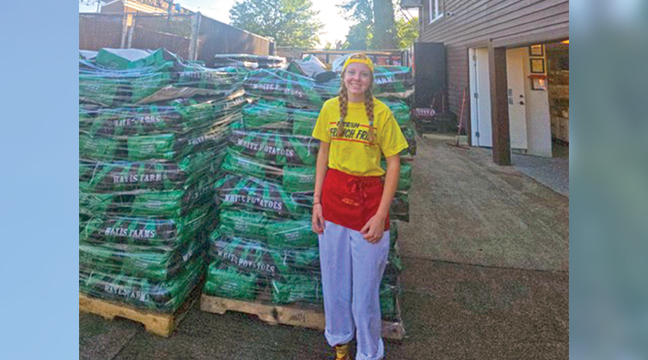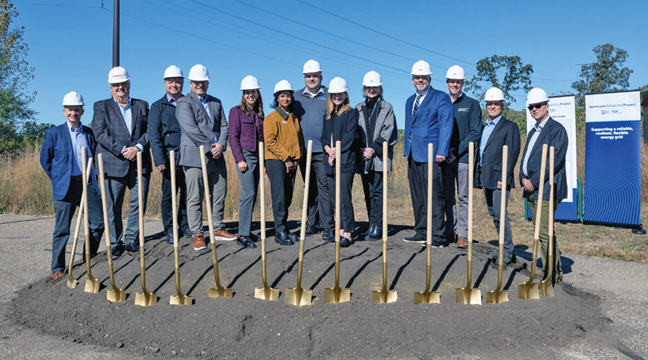Conditions were right Tuesday morning for a controlled burn at the Sherburne History Center. A crew from Prairie Restorations Inc. in Princeton arrived shortly after 9 a.m. with ATV’s carrying tanks of fire suppressant material and the other tools needed to create a safe and efficient burn on a particularly windy day.
Outfitted in bright yellow hard hats and the thick yellow shirts work by smoke jumpers and other outdoor fire professionals, the crew used drip torches to create “lines of fire” which spread in controlled patterns that kept the flames from getting too near the main building or threatening the outdoor oxcart display.
Crew chief Patrick Kelly used one of the ATVs to lay out lines of fire suppressant in advance of each burn, with other crew members doing the same with the other machine or with backpack units to make sure the flames did as they were told.
SHC Curator Maureen Galvin said that the prairie grasses around the SHC had last been burned in 2010, and she recalled that the effort had resulted in a ”profusion” of wild flowers and new plant life at the center.
As in the Sherburne National Wildlife Refuge, which conducts controlled burns on a regular basis, many of the plants at the SHC have adapted to survive fires by developing deep roots or thick outer layers. Prairie grasses and wildflowers are primary beneficiaries of the process, and some species even require exposure to fire to reach their full growth potential.
The U.S. Fish and Wildlife Service says that most animals are able to get out of the way of these planned burn operations, either by retreating to underground burrows of by simply leaving the area in advance of the fire.









